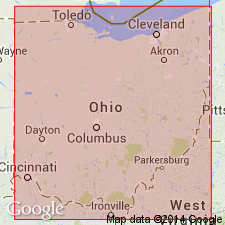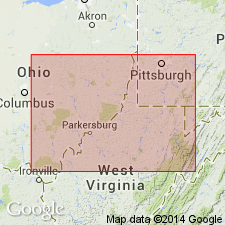
- Usage in publication:
-
- Kerbel Formation
- Modifications:
-
- Named
- Dominant lithology:
-
- Sandstone
- AAPG geologic province:
-
- Appalachian basin
Summary:
Named the Kerbel Formation in the subsurface of OH for the Kerbel well, Woodville Township, Sandusky Co., OH. Consists of fine- to coarse-grained sandstone that is dolomitic in upper part. Thickness is 0 to 52 meters. Overlies the Eau Claire and Conasauga Formations and underlies the Knox Dolomite. The Kerbel is of Late Cambrian age.
Source: GNU records (USGS DDS-6; Reston GNULEX).

- Usage in publication:
-
- Kerbel Formation*
- Modifications:
-
- Overview
- AAPG geologic province:
-
- Appalachian basin
Summary:
The Kerbel Formation is recognized in the subsurface of the Waverly arch in north-central OH. Overlies the Conasauga Formation and underlies the Knox Dolomite. The Kerbel is of Late Cambrian (Franconian) age.
Source: GNU records (USGS DDS-6; Reston GNULEX).
For more information, please contact Nancy Stamm, Geologic Names Committee Secretary.
Asterisk (*) indicates published by U.S. Geological Survey authors.
"No current usage" (†) implies that a name has been abandoned or has fallen into disuse. Former usage and, if known, replacement name given in parentheses ( ).
Slash (/) indicates name conflicts with nomenclatural guidelines (CSN, 1933; ACSN, 1961, 1970; NACSN, 1983, 2005, 2021). May be explained within brackets ([ ]).

